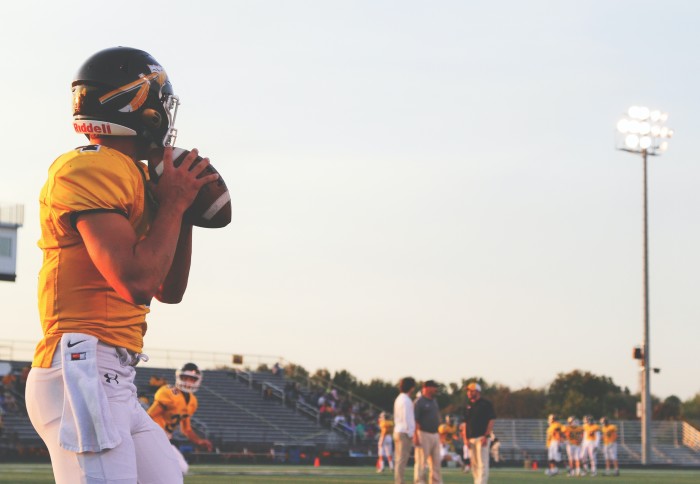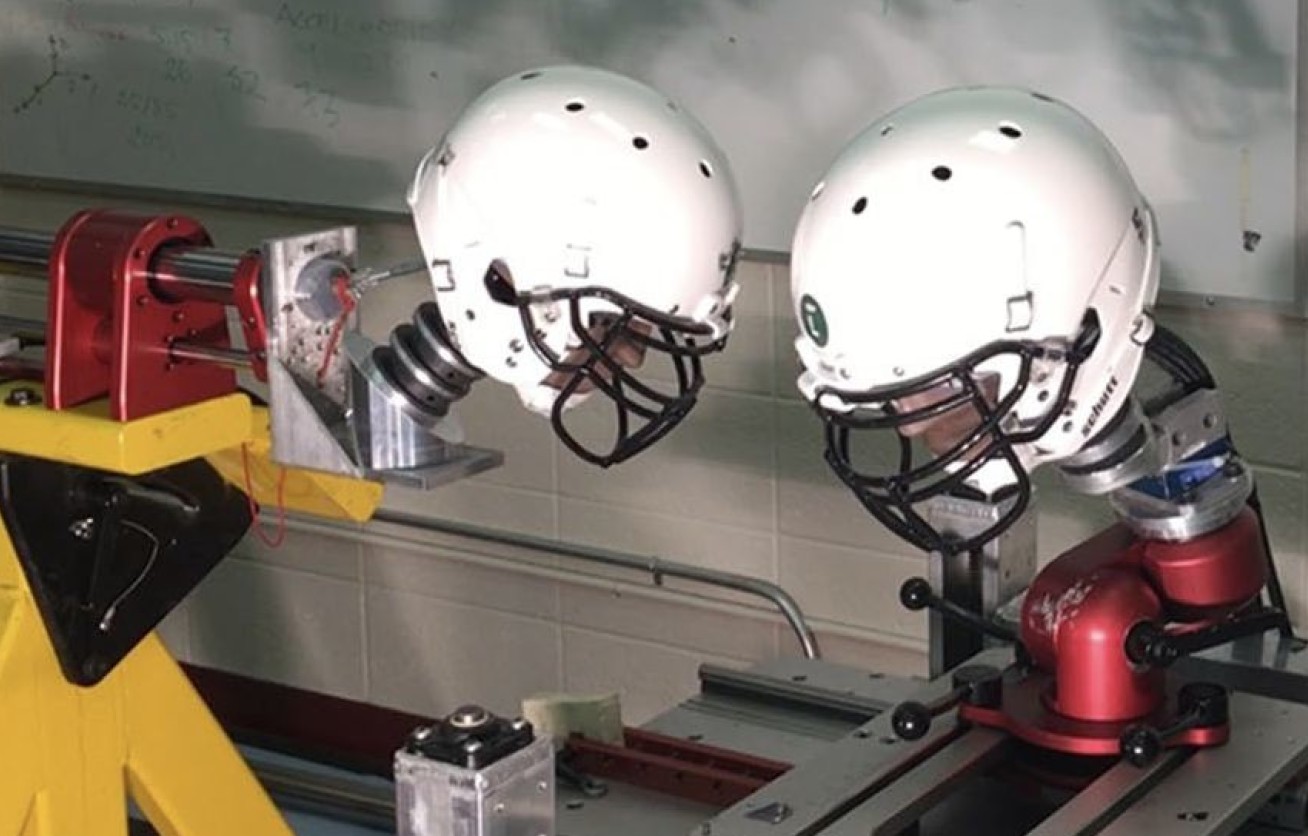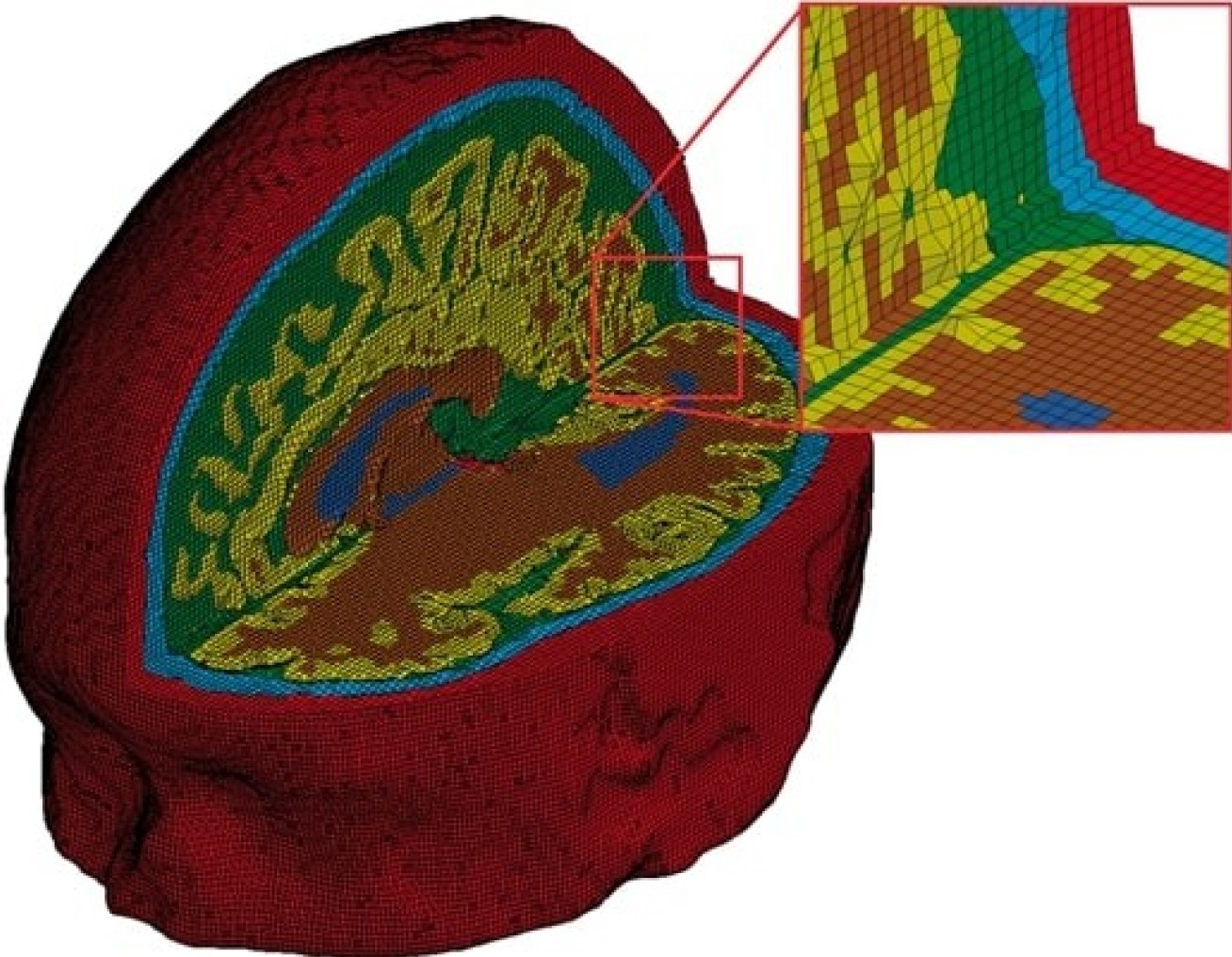

Imperial experts are closer to discovering the reason why some people lose consciousness following sports-related head injuries.
The study at Imperial College London, analysed videos of head impacts in American football players and modelled strain and strain rate on the brain following an injury.
Brain strain measures how much brain deformation occurs after injury whereas strain rate is how quickly the impact took place.
These models were used to compare injuries of athletes who had lost consciousness to those who remained awake to find out what parts of the brain were responsible for a loss of consciousness event.
They found that athletes who became unconscious experienced injuries involving head impacts at higher speeds. The brainstem regions of the brain also experienced higher forces, or “brain strain”, during these impacts which suggests this region plays a part in losing consciousness after a head injury.
Dr Karl Zimmerman, lead author of the research from Imperial’s Department of Brain Sciences said: "Our results using computational models of brain injuries match up with what has been seen when looking at real, damaged brains. These results provide further evidence of what brain structures are responsible for consciousness, and highlights the use of computational models when looking at outcomes after injuries to the brain."
"These results provide further evidence of what brain structures are responsible for consciousness." Dr Karl Zimmerman, Imperial College London
Senior author Professor David Sharp, Centre Director at the UK DRI Care Research & Technology Centre and Associate Director of the Imperial Centre for Injury Studies said:
"The results help us understand the neurological reasons why some players lose consciousness after head impacts. It suggests that a key factor is how much strain is placed on brain regions involved in maintaining arousal. Moving forwards, we may be able to predict what type of head impact might produce neurological problems and use this information to reduce this risk."
Modelling brain injuries
This study reviewed over five years of footage of more than a thousand National Football League American football games to find 41 videos where neurological events, such as lack of consciousness or severe head injury, were seen.
The videos guided physical reconstructions of the impacts at the University of Ottowa Neurotrauma Impact Science Laboratory, where a male model head fitted with an American football helmet and shoulder pad was used to generate head-to-head collisions. This model was used to capture the movement of the head during impact.

The data from these physical head impacts were then fed into the Imperial College London 3D finite element model of the human head to measure how much strain was put on the brain, and which regions were associated with loss of consciousness.
Dr Mazdak Ghajari, co-author at the HEAD lab at the Dyson School of Design Engineering said: “This work is a clear example of strong interdisciplinary collaboration between faculties of Engineering and Medicine.
“Our engineering computational models provide new predictions of brain deformation during the few milliseconds of head collisions, but linking these predictions with neurological symptoms could only be done by our top neuroscientists and through hours of passionate discussion and adopting common language.”
The impact on contact sports
This study also suggests that head impacts which lead to a loss of consciousness are more severe in terms of the forces involved, and therefore contact sports such as Rugby, should consider whether there are alternative pathways of care for athletes with these injuries.

Dr Simon Kemp, Medical Services Director of the England National Rugby Union (RFU) and co-author, said this study has already had an impact on the guidelines around the sport:
"These computational study findings were a factor that influenced World Rugby’s (the International Federation) in 2022 to update the Graduated Return to Play Guidelines and specifically the decision to mandate a minimum return of 12 days for all players who had lost consciousness (criteria 1 cases) and not allow them to return in a minimum of 7 days."
Read the full paper The biomechanical signature of loss of consciousness: computational modelling of elite athlete head injuries in Brain.
Article text (excluding photos or graphics) © Imperial College London.
Photos and graphics subject to third party copyright used with permission or © Imperial College London.
Reporter
Meesha Patel
Faculty of Medicine Centre

Contact details
Tel: +44 (0)20 7594 7909
Email: meesha.patel17@imperial.ac.uk
Show all stories by this author



